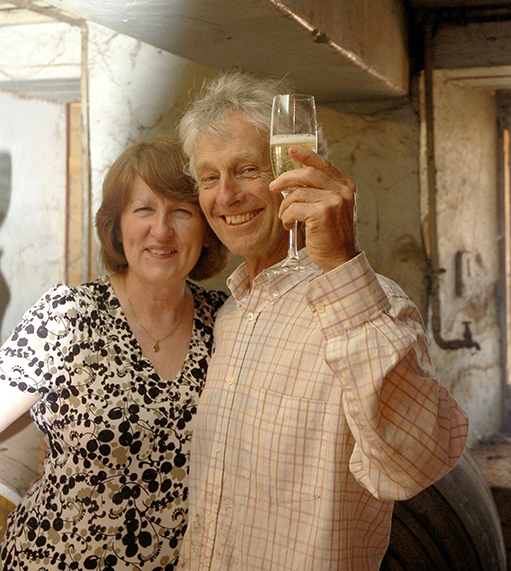“Come quickly, I am drinking the stars,” Dom Pérignon is famously quoted as saying upon taking his first sip of Champagne. Urban myth suggests that the Benedictine Monk invented the world’s favourite celebratory drink back in 1693.
The Benedictine link to the origins of ‘Champagne’, or Méthode traditionnelle, as it is now called, is not lost on vigneron Nick Humphrey who has just released a new Blanc de Blanc under the New Norcia Abbey label.
“I thought there was a market for it and it was a fun challenge because of the double fermentation and of course there was the monastic link with Dom Perignon.”
Grape vines were one of the first things planted by New Norcia’s founder Rosendo Salvado back in the 1850’s although the major production resulted from 80 acres of vines planted later at Wyening, and peaked in the mid 1950’s. Unfortunately major salinity problems caused the closure of the vineyard and winery in 1973.
More than thirty years later the New Norcia label is up and running again, using grapes from Nick’s Bindoon Estate vineyard, 50 kms south of New Norcia. Planted in the eighties with Shiraz, Cabernet Merlot and Chardonnay, the first wines were produced in the nineties.
The ultimate challenge for the Perth- based optometrist was to create a quality bubbly, worthy of a special occasion – that won’t produce a headache in the morning. Working closely with the winemaker from Jane Brook in the Swan Valley, he set out to achieve just that. But exactly how is this possible? A combination of things – the purity of the organic grapes is a contributing factor, however is mostly due to the traditional method of production.
Nick explains the process of making sparkling wine using Méthode traditionnelle; “Firstly the Chardonnay grapes are made into wine, but it is done with a lower sugar level for the first fermentation. The grapes are harvested in January, earlier than those for still wine, when there is still high acid levels.
Then it’s bottled as you would Chardonnay, but with a little liqueur and a bit more yeast to do the the second fermentation in the bottle.”
Which brings us back to Dom Pérignon, who for all his false fame, worked tirelessly to develop many advances in production of Champagne, including holding the cork in place with a wire collar (muselet) to withstand the pressure of the secondary fermentation.
Once this double fermentation is complete the bottles are then disgorged, the lees removed, then resealed again ready for labelling and sale.








